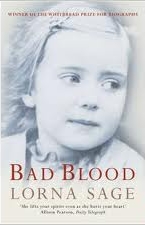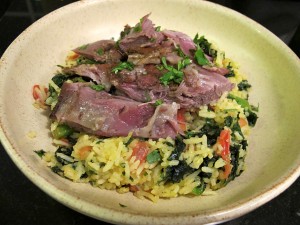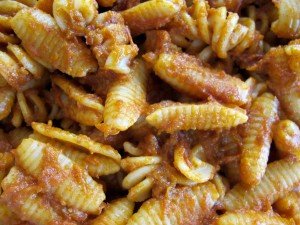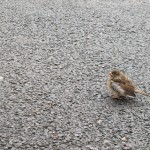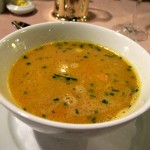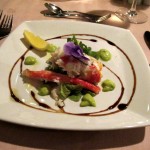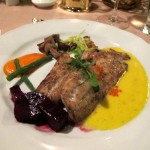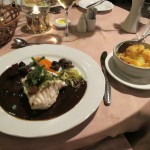
Last time I cooked snapper I tried to pan-fry it. It was a disaster. The fillets weren’t cooked inside but the outside was overcooked. Since I’m in a bit of a ‘slow & low’ phase, I thought I would give this good looking fish a second chance.
I’m adapting this Ainsley Harriott recipe: jamaican curried snapper. I will modify the ingredients slightly but the main difference will be that I’m going to make the sauce first, then gently poach the fish in it until the fish gets to 45 degrees.
Sauce ingredients:
1 tsp coriander seeds
1 tsp cumin seeds
1 tsp black mustard seeds
2 tsp black peppercorns
1/4 tsp cayenne pepper
1 tsp ground turmeric
groundnut oil
40g/1½oz butter
1 large onion, finely chopped
6 – 8 garlic cloves, crushed
Root ginger, about 1.5 times the volume of garlic, peeled and finely grated
1 tsp light brown soft sugar
200ml coconut milk
2 bay leaves
salt and freshly ground black pepper
juice to taste, added just before serving
The sauce is for 500g red snapper fillet, skinned and cut into pieces.
I’m serving with jerk roasted cocquina squash based on Jamie Oliver’s roasted squash, except I’m using 1.5 tsp jerk seasoning instead of his flavourings and serving with chapattis, plain rice and salad leaves.
What I did: The snapper was at room temperature before cooking. I made the sauce then poured it over the fish pieces in a baking dish. The dish went into the oven which was at 50. After about 20 mins I turned the oven up to about 75 degrees because the temperature of the fish wasn’t changing at all. After 10 mins at 75 degrees the temperature hadn’t changed much either. In the meantime the squash had finished ages ago so I transferred the curry to the hob instead. The temperature went up a lot quicker and I took the fish off the heat at about 50 degrees.
Result: The snapper turned out ok but still a bit chompy. I was aiming for very soft, melt-in-the-mouth fish like you get at Asha’s. I think perhaps very gently poaching the fish in the sauce on the hob is the best way to go, for control and because the temperature needs to be checked frequently. Also next time I might add the lime juice and season the sauce properly before I poach the fish in it, as it lacked salt and tang. I thought the squash turned out fantastic but it was too hot for Mark, so perhaps just 1 tsp of jerk seasoning next time!
